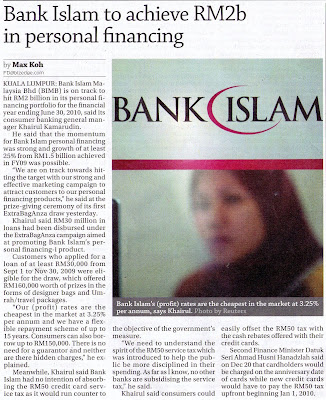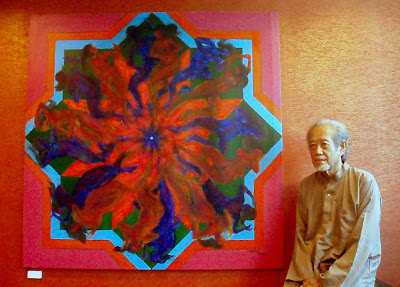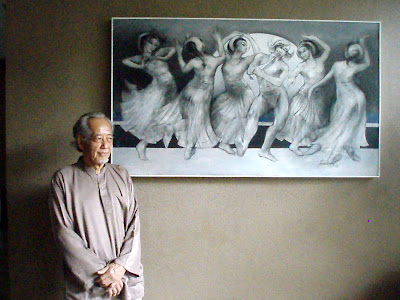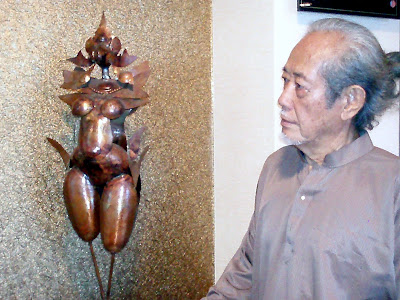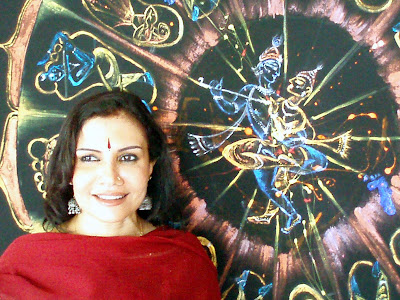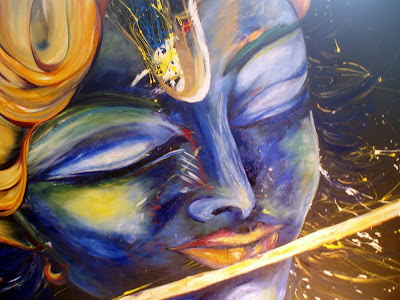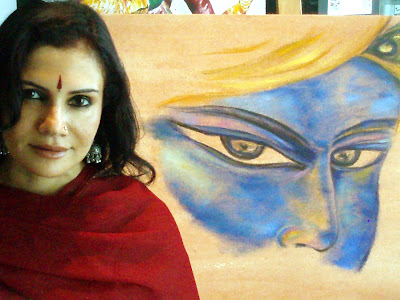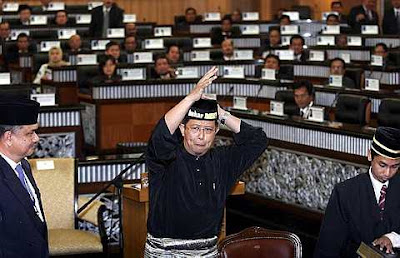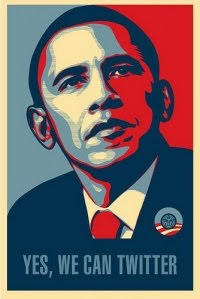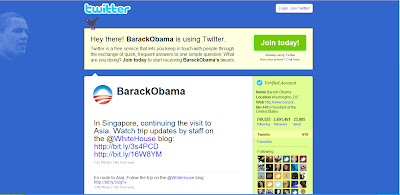This is a seminar paper that I wrote for my
Journalism Ethics subject in Taylor's College.
Ethical journalism requires conscientious decision-making in context
By Max KohIntro
The practice of journalism and ethics are intertwined in the way how journalists operate and function in the newsroom. Tanner (2005) argues that ethics is not an optional add-on but underpins the practice of journalism. The everyday routine of journalism is very much entrenched in the way how journalists gather, write and disseminate news to the public. This is because journalists are expected to maintain public trust- in addition to reporting accurately (Hargreaves 2003), and it is the ethical decision-making in journalistic practice that determines how much the public can trust journalists.
It is the society that grants journalists the power to observe and report, and the society expect nothing less than true, honest, fair and accurate reporting (Tanner et al 2005). Kovach and Rosenthiel (2004) argue that journalists’ first loyalty to the citizens and their objective is to report facts as truthful and honest as possible. However, in fulfilling these responsibilities to the public, journalists face decision-making process everyday that is not always so obviously determined by a set of codes and law. Franklin (2005) argues that while journalistic codes of ethics exist to assist reporters to make those important decisions every day, ultimately it is conscience that becomes the ethical compass in situations where no formal codes can give clear guidance or morally dictates a decision is right or wrong. Franklin (2005) argues that the more experience a journalist is, the more readily he/she should recognise that such codes are not all-inclusive.
Nevertheless, Voakes (1997) argues that there is a hierarchy of social influences that influence journalists’ decision-making in ethical situations at most of the times, whether explicitly or not. This view is shared by Tanner (2005) who argues that journalists wrestle daily with their consciences in making ethical decisions in the newsroom.
Whatever it is, it is undisputed that conscientious decision-making is vital and influences ethical journalistic practices in the newsroom. The purpose of this paper is to examine the various factors that influence decision-making process and how journalists are guided in their ethics by intrinsic motivations (such as religious upbringing, personal moral compass, or desire for career advancement) and external heuristics (such as code of ethics, peer pressure, or the threat of reprimand) (Voakes 1997). At end of this paper, we hope to prove that conscientious decision-making is very much integral and vital in the practice of ethical journalism as vouched by various journalists and editors. In order to limit the scope of this paper, we will examine these factors based on the Theory of Social Influences (Shoemaker & Reese 1996). The seven factors are: individual, small group, organisation, competition, occupation, extramedia, and law.
Individual
As an individual, journalists are very much influenced by their internalised set of beliefs in the way they report. Masterson and Patching (1997) argues that journalists are very much influenced by their biases, their perception of the audience, and their own interpretation of the core ‘news value’ of consequences, proximity, conflict, human interest, novelty, and prominence. This is unavoidable as in order to tell a good story, certain aspects of the news will take precedence over others (Masterson & Patching 1997). The selection of news value itself is a form of contentious decision-making that is practiced by the journalist as an individual. As White points out (1996), these set of values can be applied to any situation that comes along, as journalists have an internalised ethical orientations to figure out what to do for themselves.
However, this form of perception is further added by a moral compass that steers how journalists operate in the newsroom. Studies have shown that journalists are drawn to the profession by a sense of social responsibility (Schultz 1998). This include the journalists’ strive to report the truth in fairness and as accurately as possible on order to serve the public interest (Kovach & Rosenthiel 2004). This ‘desire to be ethical’ (Merrill 1997) forms the foundation of journalistic responsibility and can be categorised into three overarching behavioural norms: truth-telling, responsibility, and free expression (Christians 1989). Firstly, journalists strive to report reality as accurately as possible without fiction (truth-telling). Responsibility refers to the sense of behaviour where journalists act in order to serve the public and be accountable to them. And free expression relates to the internal desire to have personal freedom from external influences.
A study conducted by Voakes (1997) found that personal, intrinsic values, does influence the decision-making process of journalists. About 68 per cent of 118 journalists interviewed admitted that personal values and own logic influence ethical journalistic decisions. Personal values such as this, argues Johnstone et al (1972) is vital for it is the journalist’s task to provide the background and interpretation necessary to give events meaning. Johnstone argues that this role is expected of the journalists as they serve the public interest.
Small group
In a talk on journalism ethics to Taylors College student recently, Centre of Journalism editor Gayathry Venkiteswaran (2008) said that a cadet journalist who enters the newsroom can be very easily influenced by the cultural norms that exist within the news institution. She advised the cadets to hold on to their personal ethics and not succumb easily to social norms. This newsroom cultural norms can be interpreted as the small group social influence, and is confirmed by Schultz’s (1998) 1992 Media and Democracy Survey that ‘Colleagues are consistently the most significant source of guidance for the journalists surveyed.’ Findings in Voakes’ (1997) survey support this view as it is found that colleagues and editors often embolden a journalist to take some risk ethically. A 10-question-model proposed by Black, Steele and Barney’s (1997) advise journalists to seek other perspectives in their daily decision-making process. Within the newsroom culture, it is the fellow journalists and editors that one mostly seeks advice and help from. This is crucial as the more experienced senior journalists and editors will be able to help journalists make ethical journalistic decisions.
Organisation
It is also found in Voakes’ (1998) study that the organisation continues to highly influence decision-making by scoring the highest value. Another study by Johnstone et al (1973) found that the type of organisation have a bearing on how a journalist defines his responsibilities. It also found that the larger and more powerful news organisations allow the journalist to play a more active role in their decision-making process. Johnstone argues that an organisation by its very nature places restrictions on individual autonomy. In her speech, Venkiteswaran (2008) said that most journalists working in local mainstream media had their stories killed or altered in order to protect the interest of the media owners.
In the recent general elections, a media monitor by the Centre for Independence Journalism (CIJ), Writers Alliance for Media Independence (WAMI) and Charter 2000-Aliran found that major print media allocated more coverage for the ruling party, Barisan Nasional’s (BN) candidates and activities during the election period (Aliran 2008). This lapse of balance reporting also happened during the 1999 general elections (Anuar 2003) when mainstream media was bias towards the government. This is because most mainstream media in the country are owned and/or under control of the BN parties (Loh and Mustaha 1996). Therefore, it is obvious that organisation values, including the ownership does influence the decision-making process of journalists. This demand to meet the organisation’s goal creates a conflict from time to time as journalists have to respond between the demands of others and the organisational interest. The unprecedented win by the Opposition by the elections proved that the people are losing trust in mainstream newspaper, and trust is vital as the newspaper as regarded as watchdog and not propaganda tools for the government (Venkiteswaran 2008).
Competition
Competitive influence is concerned with the organisation’s relations with competitive news media in its market as well as the organisation’s place in the market (Voakes 1997). Weaver and Wilhoit (1996) found that competing media ranked seventh out of nine choices for influences for news judgement. While the study by Voakes (1997) also found that competitiveness is the least influential factor in ethical decision-making process, it is still important as it does have some bearing on the journalist’s ultimate decision on ethical situation.
Occupation
Occupational values comprise a common system of attitudes and beliefs that is transformed through the process of socialisation, into a system of norms to guide behaviour. This can be divided into two: the formal ‘professional’ ethical codes of conduct which is more concrete and the ongoing evolving of occupational norms. The formal codes of ethics are such as those drawn up by the Media Entertainment and Arts Alliance (MEAA) and National Union of Journalists. But while they do exist, they are rarely if ever enforced (Marzolf 1991). However, they do provide the articulation of the attitudes and general behaviour that is practiced by journalists in ethical decision-making. Tanner et al (2004) confirms that while codes of ethics are powerless, the professional codes are significant as they are the practitioners’ own articulation of the central principles governing their conduct. Professional codes are vital and as a comparison of the European codes (Laitila 1995) has shown, most codes share three key principles: accountability to the public, accountability to the sources and referents, and protection of the journalist’s professional integrity. So while the code alone cannot ensure ethical journalism, it is still an important influence in making ethical decisions (Voakes 1997).
Extramedia
Extramedia refers to influences from outside the organisations and structures of the news media (Shoemaker & Reese 1996). There are two main extramedia influences: sources of information and audience reaction. Gans (1979) posits that there is a symbiotic relationship between journalists and their sources. If a journalist writes against the favour of his source, he risk cutting off the flow of information for the future. Chequebook journalism and ‘freebies’ also comes into play and may give rise to conflicts of interest.
To help journalists avoid these ethical pitfalls that may destroy their credibility, the MEAA Code of Ethics offers clauses 4 to 7. In clause 4, journalists are to not allow personal interest, or any belief, commitment, payment, gift or benefit to undermine his accuracy, fairness or independence. Clause 5 protects the journalist from conflict of interest, commercial interests, and payment respectively. While journalists are generally advised to be detached from their sources, some struggle and become influenced when covering emotive stories such as the Asian tsunami disaster (Tanner et al 2005). While clause 4 may appear to be too draconian, Tanner argues that it just mean ‘journalist needs to be particularly careful.’ It is imperative therefore journalists maintain a level of detachment and independence from external factors, as not to undermine their role and responsibility to report accurately and truthfully for the public interest (Kovach & Rosenthiel 2004). Journalists should not place themselves in position where people can manipulate them or where there is a perception that they have been bought (Tanner et al 2005).
Law
Ethical decisions are very much influenced by legal obligations as well. In Malaysia, the presence of repressive laws such as the Internal Security Act (ISA), Official Secret Act (OSA), Printing Presses and Publication Act (PPPA), and Broadcasting Act inhibit the way journalists approach news and views, careful not to stir up ‘sensitive’ sentiments (Nain & Lay Kim 2004). The way journalists write in mainstream media has been affected ever since the Operasi Lalang crackdown in 1987 when the government shut down three national newspapers, The Star, Watan, and Sin Chew Jit Poh, and had their publishing permits or licensed revoked under the ISA when they reported sensitive issues about Chinese education and inter-ethnic tensions between political parties. When The Star was revived some months later, it was very much less critical of the government. Clearly, the ways journalists approach their news are very much influenced by the draconian laws that the government use to intimidate the press (Mustafa 1985). Similarly, the government often invoke the PPPA in order to keep the media in check, threatening to revoke their licenses if they should write something that is not flattery to the government (Nain & Lay Kim 2004). With repressive laws that intimidates, the journalist’s role to report the truth without fear or bias is often impeded.
Conclusion
In conclusion, it is clear that conscientious decision-making cannot be separated from the practice of ethical journalism as clearly illustrated by the seven factors of social influence: individual, small group, organisation, competition, occupation, extramedia, and law. While these factors continue to steer the way journalist function in the newsroom and fulfil their role as interpreter of events to the public, it is imperative that journalists practice a form of ethical journalism in order to do their jobs well. As Joseph Pulitzer once said: “Without high ethical ideals, a newspaper not only is stripped of its splendid possibilities for public service, but may become a positive danger to the community” (Chadwick 1994). Therefore, ethical journalism in conscientious decision-making is not only a must, but it is the very heart that fortifies the practice of journalism itself. Without ethical journalism which involves conscientious decision-making, the role and function of the press will never be fully realised.
(2175 words)
References
Aliran 2008, ‘Utusan tops as the most pro-BN newspaper’, Election 2008- Malaysian Media Monitor’s Diary, viewed 6 June 2008, .
Alliance Online 2008, Media Alliance Code of Ethics, New South Wales, viewed 14 May 2008 .
Anuar, MK 2003, ‘The Role of Malaysia’s Mainstream Press in the 1999 General Election’, in FKL Loh, J Saravanamuthu (eds.), New Politics in Malaysia, ISEAS, Singapore, pp. 53-65.
Black, J, Steele B, Barney, R (eds) 1997, Doing Ethics in Journalism, 3rd edn, Allyn & Bacon, Boston.
Chadwick, P 1994, ‘Creating Codes: Journalism Self-Regulation’, Not Just Another Business: Journalists, Citizens and the Media, Schultz J (ed), Pluto Press, Sydney, pp 167-187.
Christians, CG 1989, ‘Ethical Theory in a Global Setting’, Communication Ethics and Global Change, Cooper TW (ed), Longman, New York, pp 3-19.
Franklin, B, Hamer, M, Hanna, M, Kinsey, M, Richardson, JE 2005, Key Concepts in Journalism Studies, Sage, London.
Gans, H 1979, Deiciding What’s News: A Study of CBS Evening News, NBC Nightly News, Newsweek, and Time, Vintage, New York.
Hargreaves, I 2003, Journalism: Truth or Dare, Oxford University Press, Oxford.
Johnstone JWC, Salwski EJ, Bowman WW 1972, ‘The Professional Values of American Newsmen’, The Public Opinion Quaterly, vol. 36, no. 4, viewed 5 June 2008,
<>.
Kovach, B & Rosenthiel, T 2001, The Elements of Journalism, Three Rivers Press, New York.
Laitila, T 1995, ‘Journalistic Codes of Ethics in Europe’, European Journal of Communication, vol. 10, no.4, pp. 527-544.
Loh, FKW and Mustafa, AK 1996, 'The Press in Malaysia in the Early 1990s: Corporatisation, Technological Innovation and the Middle Class', MI Said and Z Emby (eds), Critical Perspectives: Essays in Honour of Syed Husin Ali, Malaysian Social Science Association, Petaling Jaya.
Marzolf, M 1991, Civilizing Voices: American Press Criticism, 1880-1950, Longman, New York.
Masterson, M & Patching, R 1997, Now the News in Detail: A Guide to Bradcast Journalism in Australia, Deakin University Press, Geelong.
Merrill, JC 1997, Journalism Ethics: Philosophical Foundations for News Media, St. Martins’ Press, New York.
Mustafa, AK 1985, ‘The Pressed in Malaysia’, Aliran Monthly, vol.5, no.5, pp.5-6.
Nain, Z & Kim, WL 2004, ‘Ownership, Control and the Malaysian Media’, Who Owns the Media? Global Trends and Local Resistance, Zed Books, New York.
National Union of Journalists Malaysia 2008, National Union of Journalists Malaysia Code of Ethics, Kuala Lumpur, viewed 5 June 2008 .
Richards, I 2005, Quagmires and Quandries: Exploring Journalism Ethics, Pearson Longman, New South Wales.
Schultz, J 1998, Reviving the Fourth Estate: Democracy, Accountability and the Media, Cambridge University Press, Cambridge.
Shoemaker, P & Reese, S 1996, Mediating the Message: Theories of Influences on Mass Media Content, Longman, New York.
Tanner, S, Phillips, G, Smyth, C, Tapsall, S 2005, Journalism Ethics at Work, Pearson Longman, New South Wales.
Venkiteswaran, G 2008, Ethics in Journalism, Talk to Taylor’s College students at Taylor’s College, 11 June.
Voakes, PS 1997, ‘Social Influence on Journalists’, Journal of Mass Media Ethics Exploring Questions of Media Morality, vol. 12, no.1, viewed 5 June 2008, .
Weaver, D & Wilhoit, G 1996, The American Journalist in the 1990s: US News People at the End of an Era, Indiana University Press, Bloomington.
White, HA 1996, ‘The Salience and Pertinence of Ethics: When Journalists Do and Don’t Think for Themselves’, Journalism ans Mass Communication Quaterly, vol. 73, no.1, pp. 17-28.
